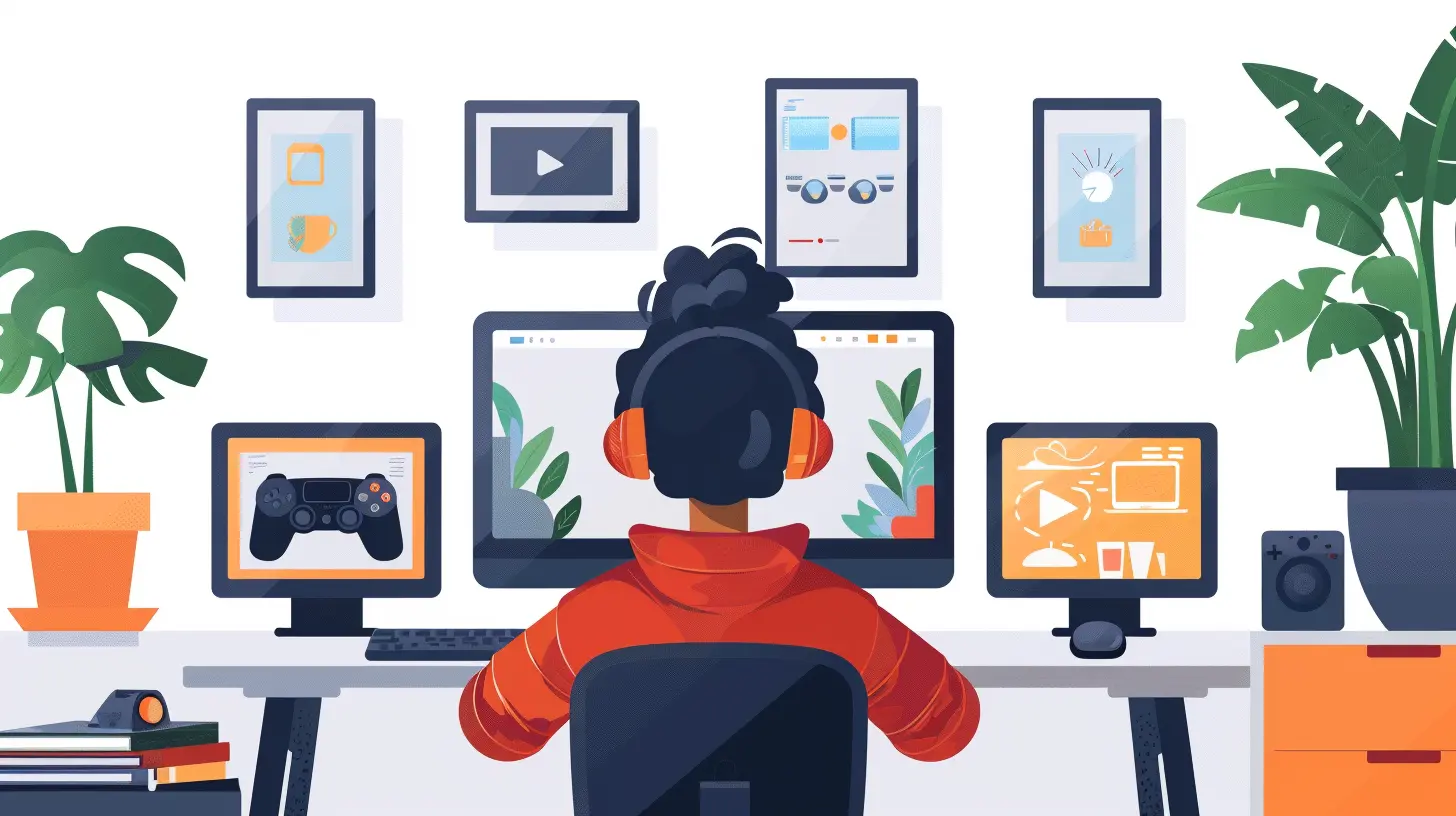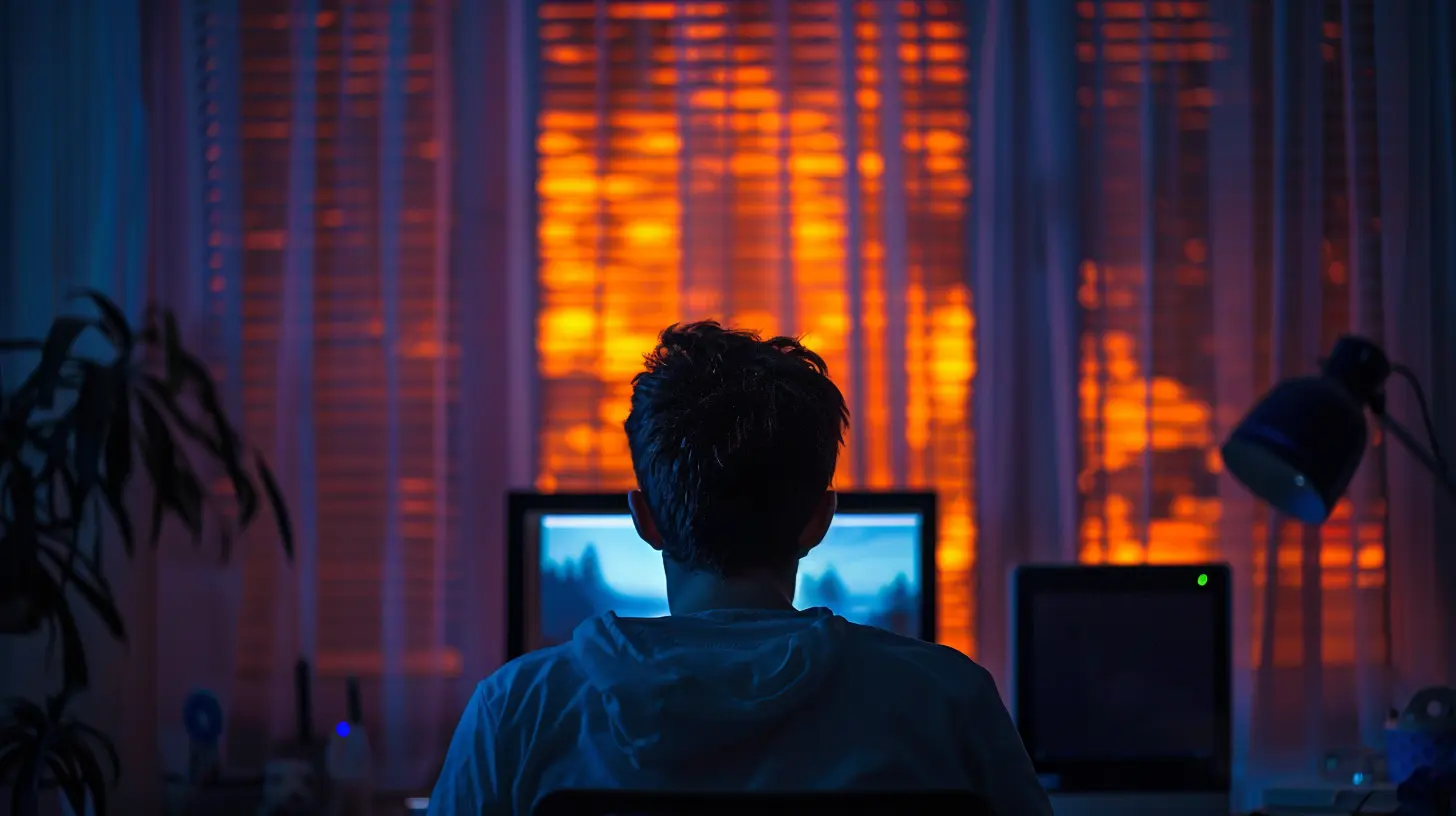How to Monitor and Limit Screen Time for Teenagers
7 April 2025
As parents, we’ve all been there—catching our teens glued to their screens for what seems like an eternity. Whether it’s social media, gaming, or binge-watching their favorite shows, screens have become an inseparable part of their world. But too much screen time? That can be a real problem.
So, how do you strike the perfect balance and ensure they’re using technology in a healthy way? Let’s dive into some practical and effective ways to monitor and reduce screen time for teenagers—without turning your home into a battleground.

Why Should You Monitor and Limit Screen Time?
Before we talk about the “how,” let’s discuss the “why.” It’s not just about cutting screen time for the sake of it—there are real risks involved with excessive screen exposure.📉 Negative Effects of Too Much Screen Time
- Sleep Disruptions: Screens emit blue light, which interferes with melatonin production, leading to poor sleep.- Mental Health Issues: Studies link excessive screen time to anxiety, depression, and lower self-esteem.
- Academic Problems: More screen time often means less focus on schoolwork.
- Physical Health Concerns: Sitting for long hours can lead to obesity and posture-related issues.
- Social Skills Decline: More time online can mean fewer real-life interactions, affecting their ability to communicate effectively.
Understanding the downsides makes it clear why setting limits is essential. Now, let’s talk about how to do it without constant conflicts. 
🔎 How to Monitor Your Teen’s Screen Time
The first step to managing screen time is understanding how much and what kind of content they’re consuming. Here are some smart ways to keep track without invading their privacy:1. Use Built-in Screen Time Trackers
Most devices now have built-in features that let you monitor usage. Whether it’s Apple’s Screen Time, Google’s Digital Wellbeing, or similar features on Android devices, these tools give you insights into how much time your teen spends on their screen and which apps they use the most.2. Parental Control Apps
Apps like Bark, Qustodio, and Norton Family allow you to set screen-time limits, filter content, and even get activity reports. These apps can be a great way to keep an eye on your teen’s digital habits while respecting their privacy.3. Check Their Online Activity Together
Instead of spying, make it a habit to discuss their screen habits openly. Ask them what they’re watching or playing. Showing interest in their digital world can make monitoring feel less like an invasion and more like a shared experience.4. Establish a "Tech-Free" Zone
If you notice their screen time getting out of control, set up tech-free zones in the house, like the dining table or bedrooms at night. This not only limits screen time but also encourages more meaningful interactions.
⏳ How to Limit Screen Time Without Resistance
Now comes the tricky part—actually cutting down their screen time without constant arguments. Here’s how you can do it effectively:1. Lead by Example
Let’s be honest—if we’re glued to our screens, how can we expect our teens to be any different? Start by reducing your own screen time, especially during family interactions. Actions speak louder than words!2. Set Daily Screen Time Limits
A general rule of thumb from pediatricians is no more than two hours of recreational screen time per day (excluding schoolwork). You can use parental control settings to automatically lock their devices after a set time.3. Encourage Offline Activities
When screens become the default entertainment, teenagers may struggle to find alternatives. Help them discover fun offline activities like:- Sports or workout routines
- Reading books or journaling
- Learning a musical instrument
- Engaging in DIY projects
- Spending time outdoors
By making non-screen activities more appealing, they’ll naturally spend less time on their devices.
4. Use the "Earn Screen Time" Approach
Want to make screen time feel more like a privilege than a right? Introduce a reward-based system where they earn screen time by completing tasks—homework, chores, outdoor time, or even reading a book.5. No Screens Before Bedtime
This one’s a game-changer! Set a “no screens an hour before bed” rule to improve their sleep quality. Replace screen time with bedtime routines like reading, meditation, or light stretching.6. Create Family Time Without Screens
Designate certain times of the day as family time—device-free dinners, board game nights, or weekend outings. Keeping these moments tech-free strengthens relationships and creates meaningful interactions.
💡 Handling Resistance and Pushback
Let’s be real—your teen probably won’t love the idea of screen limits. Expect some resistance. But don’t worry, here’s how to make the transition smoother:1. Involve Them in the Process
Instead of dictating rules, make it a conversation. Sit down and talk about a reasonable screen-time routine that works for both of you. When teens feel like they have a say, they’re more likely to cooperate.2. Explain the "Why"
Rather than just saying, “Because I said so,” explain why cutting screen time is essential. Share the negative effects and how it benefits their health and well-being. When they understand the logic behind the rules, they’re more likely to follow them.3. Be Consistent
If you set rules but don’t enforce them, they’ll push boundaries. Be firm but fair—stick to the guidelines without making exceptions every time they negotiate.4. Offer Alternatives
Simply taking away their screen time won’t work—they need something to replace it with. Encourage activities that keep them engaged and entertained.🎯 Final Thoughts
Limiting screen time for teenagers isn’t about turning them into tech-free monks—it’s about finding a healthy balance that allows them to enjoy technology without over-reliance.By setting fair limits, encouraging healthier habits, and leading by example, you can help your teen develop a positive relationship with screens. The key? Communication, patience, and a whole lot of creativity.
Remember, you’re not just limiting screen time—you’re opening the door to more meaningful experiences. And that’s something worth striving for!
all images in this post were generated using AI tools
Category:
Limiting Screen TimeAuthor:

Steven McLain
Discussion
rate this article
5 comments
Quinn McClintock
Behind every screen, a world unfolds—some bright, some shadowed. How you navigate this digital labyrinth shapes not just their time, but their very essence. Are you ready to unveil the hidden truths?
April 14, 2025 at 3:27 AM

Steven McLain
Absolutely! It's crucial to guide teenagers through their digital experiences, helping them balance screen time while fostering their well-being and personal growth.
Rosalind Henderson
Thank you for sharing these insightful tips on managing screen time for teenagers. Striking a balance between technology and real-life interactions is essential for their development. I appreciate the practical strategies you’ve provided; they’re not only helpful for parents but also encourage healthier habits for our teens. Great read!
April 11, 2025 at 3:17 AM

Steven McLain
Thank you for your kind words! I'm glad you found the tips helpful for fostering a balanced approach to screen time.
Mallory Hernandez
Balance freedom and guidance; technology shapes their future, not just habits.
April 10, 2025 at 4:51 PM

Steven McLain
Absolutely! Striking the right balance between freedom and guidance is crucial, as technology plays a significant role in shaping teens' futures and habits.
Kairo O'Brien
Set clear boundaries consistently.
April 9, 2025 at 5:08 AM

Steven McLain
Absolutely! Consistent boundaries help teens understand expectations and promote healthier screen time habits.
Daniella Warner
Ah, the eternal battle of screen time! Let’s be real—navigating teenage tech habits is like herding cats. Set those boundaries, stick to your guns, and remember: it’s not about restricting fun, but about making space for real-life adventures. You got this!
April 7, 2025 at 4:58 PM

Steven McLain
Absolutely! It's all about balance—encouraging real-life experiences while teaching responsible tech use. Thanks for the support!




